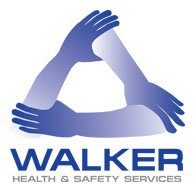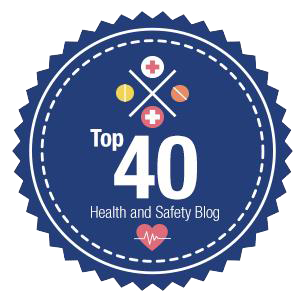When we have bad weather we need to ensure that there is a safe access and egress to the work environment. We would also use the neighbourhood experience.
Neighbourhood principle is a principle of English law which says that a person should take reasonable care to avoid acts or omissions that s/he can reasonably foresee as likely to cause injury to the neighbour.
It is beneficial to purchase some grit to keep in case the weather changes – which id does quite frequently.
From the L24 document I have attached regulation 12 condition of floors and traffic routes.
(1) Every floor in a workplace and the surface of every traffic route in a workplace shall be of a construction such that the floor or surface of the traffic route is suitable for the purpose for which it is used.
(2) Without prejudice to the generality of paragraph (1), the requirements in that paragraph shall include requirements that –
(a) the floor, or surface of the traffic route, shall have no hole or slope, or be uneven or slippery so as, in each case, to expose any person to a risk to his health or safety; and
(b) every such floor shall have effective means of drainage where necessary.
(3) So far as is reasonably practicable, every floor in a workplace and the surface of every traffic route in a workplace shall be kept free from obstructions and from any article or substance which may cause a person to slip, trip or fall.
(4) In considering whether for the purposes of paragraph (2)(a) a hole or slope exposes any person to a risk to his health or safety –
(a) no account shall be taken of a hole where adequate measures have been taken to prevent a person falling; and
(b) account shall be taken of any handrail provided in connection with any slope.
(5) Suitable and sufficient handrails and, if appropriate, guards shall be provided on all traffic routes which are staircases except in circumstances in which a handrail cannot be provided without obstructing the traffic route.
108 Floor and traffic routes should be of sound construction and should have adequate strength and stability, taking account of the loads placed on them and the traffic passing over them. Floors should not be overloaded.
109 The surfaces of floors and traffic routes should be free from any hole, slope, or uneven or slippery surface which is likely to cause:
- a person to slip, trip or fall;
- a person to drop or lose control of anything being lifted or carried;
- instability or loss of control of vehicles and/or their loads.
110 Damaged surfaces that may cause a person to trip or fall should be made good and conspicuously marked or protected until this can be done. Temporary holes should be adequately guarded. Take account of people with disabilities. Surfaces with small holes (for example metal gratings) are acceptable provided they are not likely to be a hazard. For deep holes where there is a risk of a fall, you should refer to regulation 13 and associated ACOP text, and the Work at Height Regulations 2005.
111 Slopes should not be steeper than necessary. Moderate and steep slopes, and ramps used by people with disabilities, should have a secure handrail where necessary.
112 Surfaces of floors and traffic routes likely to get wet, or to be subject to spillages, should be of a type which does not become unduly slippery. Floors near hazards that could cause injury if anyone were to fall against them (for example a woodworking or grinding machine) should be slip-resistant and be kept free from slippery substances or loose materials.
113 Where a leak, spillage or other type of contamination occurs and is likely to be a slipping hazard, take immediate steps to fence it off, clean it up, or cover it with something to stop it being slippery (eg absorbent granules).
114 Where a floor is liable to be made wet through work activity, drains and channels should be provided and positioned to minimise the area of wet floor, and the floor should slope slightly towards the drain. Where necessary to prevent tripping hazards, ensure drains and channels have covers which should be as near flush as possible with the floor surface.
115 Where reasonably practicable, processes and plant that may discharge or leak liquids should be enclosed (for example by bunding), and leaks from taps or discharge points on pipes, drums and tanks should be caught or drained away. Stop valves should be fitted to filling points on tank-filling lines. Where work involves carrying or handling liquids or slippery substances, as in food processing and preparation, the workplace and work surfaces should be arranged to minimise the likelihood of spillages.
116 Arrangements should be made to minimise risks from snow and ice. This may involve gritting, snow clearing and closure of some routes, particularly outside stairs, ladders and walkways on roofs.
117 Floors and traffic routes should be kept free of obstructions that may present a hazard or impede access. This is particularly important in any place where an obstruction is likely to cause an accident, for example near emergency routes, stairs, corners or junctions.
118 Where a temporary obstruction is unavoidable and is likely to be a hazard, prevent access or take steps to warn people (including drivers) by, for example, the use of hazard cones. Vehicles should not be parked where they are likely to be a hazard. Materials that fall onto traffic routes should be cleared as soon as possible.
119 Every open side of a staircase should be securely fenced. As a minimum, the fencing should consist of an upper rail at 900 mm or higher, and a lower rail.
120 A secure and substantial handrail should be provided and maintained on at least one side of every staircase, except at points where a handrail would obstruct entry or exit, such as steps in a theatre aisle. Handrails should be provided on both sides if there is a particular risk of falling, for example where stairs are heavily used, or are wide, have narrow treads, or where there are liable to be spillages on them. Additional handrails should be provided down the centre of particularly wide staircases where necessary.
121 A traffic route means a route for pedestrian traffic, vehicles or both and includes any stairs, staircase, fixed ladder, doorway, gateway, loading bay or ramp.
122 Slips and trips are the most common cause of injury at work. Most slips occur when floors become wet or contaminated and many trips are due to poor housekeeping.
123 To prevent slips and trips:
- stop floors getting wet or contaminated in the first place;
- have effective arrangements for both routine cleaning and dealing with spills;
- remove spillages promptly;
- leave smooth floors dry after cleaning or exclude pedestrians until the floor is dry;
- use the right cleaning methods for your floor;
- look out for trip hazards (eg uneven floors, trailing cables);
- keep walkways and work areas clear of obstructions;
- encourage your workers to keep the workplace tidy;
- consider the use of slip-resistant flooring material.
124 Consider providing slip-resistant footwear where slipping hazards arise despite the precautions set out in paragraph 123. Further guidance is available from HSE on slips, trips and falls and also on flooring types.
125 Building Regulations have requirements on floors, stairs and ramps.1,2 Advice is available from local authorities.
126 Steep stairways are classed as fixed ladders and are dealt with under the Work at Height Regulations 2005.
Contact us if you require advice.






